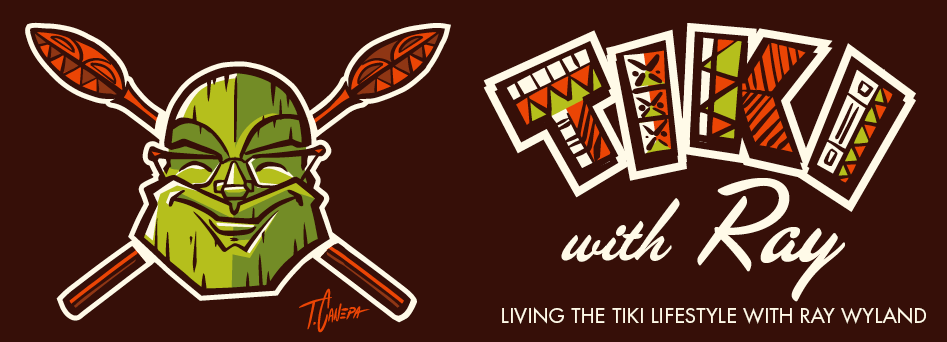
The first Tiki revival started back in the early ’90s and it was very underground. Leading this revival was a handful of ex-punks and alternative types. The Tiki community was a subculture of a subculture! The Tiki bar options were limited to only the places that happened to be still around. I’m guessing most of the patrons of these Tiki bars went because the bar was close to their home, not because of a love of Tiki.
This was the Tiki reality back then, but it didn’t have to stay that way.
If Tiki was going to survive, let alone have a future, new bars needed to be opened. Michael Thanos was one of first few to open a new Tiki bar. He is the owner of Forbidden Island in Alameda, CA, which is incredible! It’s a must visit for anyone visiting the Bay Area who loves Tiki. Forbidden Island opened back in 2006 and decade later is going stronger than ever. Here is Michael’s story…
What brought you into the “Tiki lifestyle” and how long has it been part of your life?
Michael- My obsession with Tiki began in the late ’90s, when I was looking for a theme for my 30th birthday. Having had a keen interest in the “retro” lifestyle for several years, I had a subscription to Modern Lounge, a fab little zine that really piqued my interest in all things Mid-Century. One particular issue had an article entitled “Host the Perfect Tiki Party” and the proverbial light-bulb went off. It was really well written and made mention about making sure all the elements were right, from the music (Martin Denny, Les Baxter) to the food (recipes for coconut shrimp included), and the drinks (mention was made of the Zombie, Mai Tai etc). Standard stuff for this day and age, but this subject matter was rare at the time. In particular, mention was made (of course) of Don the Beachcomber and Trader Vic’s. The latter seemed somewhat very familiar to me and after doing a search in the White Pages, I discovered that there was a Trader Vic’s in Emeryville…
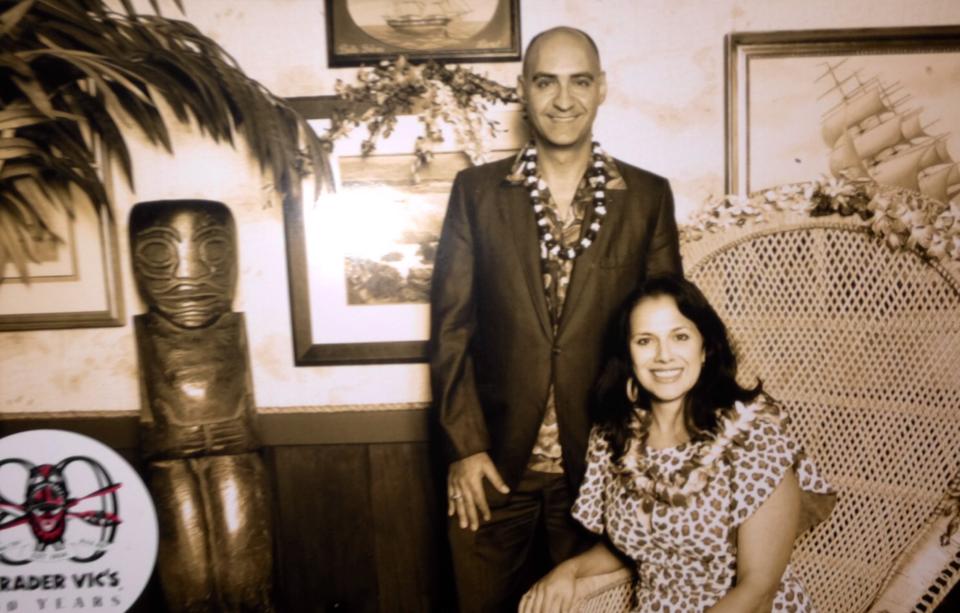
We immediately set off for it. I’ll never forget walking into those hallowed grounds for the first time or my very first sip of their Mai Tai! We became instant regulars and I was hooked. Needless to say, the birthday party was a great success and it was suggested that I do it again! Several guests even suggested I help them set up their own Tiki party.
Another twist of fate was to follow a year or so later. My wife and I planned a trip to Florida and part of that was a brief stop in Ft. Lauderdale to visit some relatives. On the way to our hotel, we came upon the incredible Mai Kai! It was totally unbeknownst and unplanned. We literally saw it from the street as we drove by. It was earlier in the day and the valet allowed me to take a brief look inside. It was absolutely spectacular, a Tiki wonderland of absolutely epic proportions! We checked in to our hotel, patiently waited for 5 PM, and returned to the Mai Kai. We closed it down that night and I was absolutely blown away by the quality of their cocktails. It was like the Vic’s Mai Tai taken to an absolutely sublime level, with varied flavors just tantalizing my taste buds and absolutely unlike anything I’d ever imbibed. This was IT for me. Upon returning home, I set off on a course to find out everything I could about Tiki, specifically the cocktails and it’s incredible history. It absolutely fascinated me, especially after reading Sven Kirsten’s Book of Tiki and seeing these amazing images of Mid-Century Tiki meccas that spanned the nation.
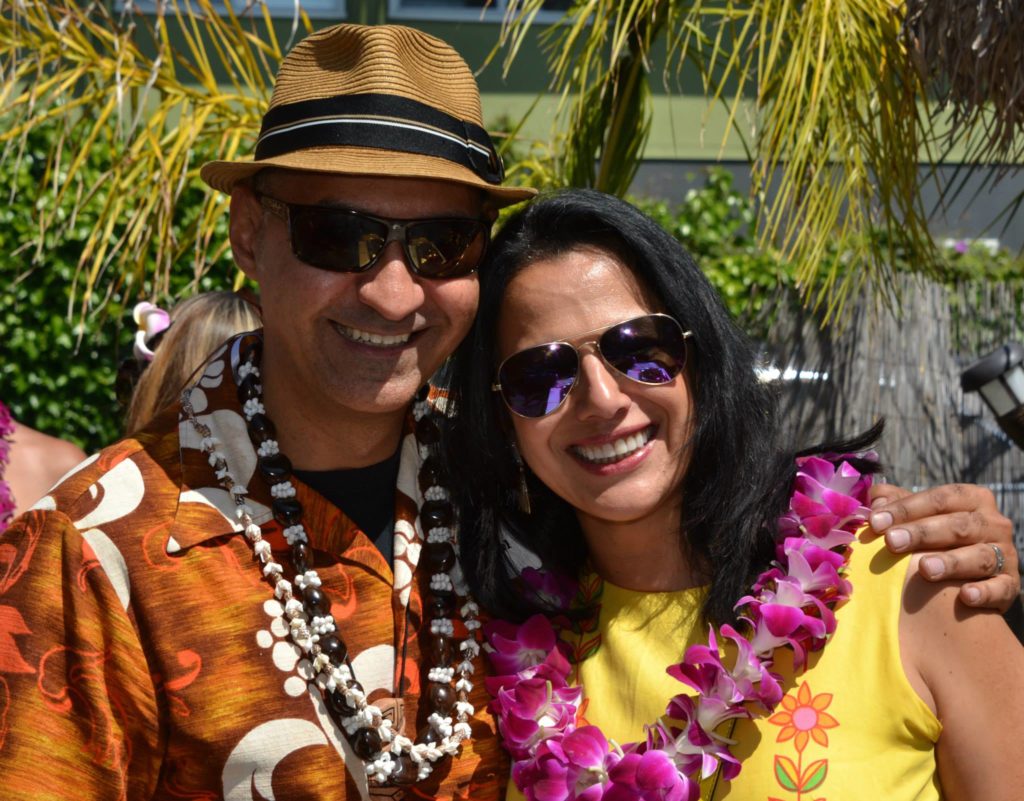
When and what made you decide to build your own Tiki bar?
Michael- I started delving more into the Tiki history and specifically the Bay Area’s role in this. I discovered that the Mai Tai was created in Oakland and that my adoptive city was actually a hotbed of Tiki culture at one point in time, home to several famed Tiki meccas, such as the Zombie Village (kitty corner to the original Trader Vic’s on 65th and San Pablo), the Bali Hai (20th and W. Grand Ave), and at least two nautical themed restaurants in Jack London Square.
For the next couple years, I frequented any and all Tiki bars and restaurants I could find in the Bay Area, including the Tonga Room, Bamboo Hut, Trader Sams, Sneaky Tiki (that had opened briefly in SF around that time), and the Temple Bar in Berkeley. One thing was certain: the drinks were not up to par at all and bore no relation to the sort of cocktails discussed and pictured in Book of Tiki. Although referenced as Tiki, they came nowhere close to those I’d had at Trader Vic’s and Mai Kai. Keep in mind too, that Trader Vic’s at that time, was catering to an older generation and completely lacked any “young” vibe. Around 2003, I felt the time was right to open my own Tiki bar, one that would not only serve as an homage to Mid-Century Tiki, but one that would serve the types of cocktails that were being served in those bars and that were currently still being served in places like the Mai Kai. Also, having been pro-Oakland long before it was “cool,” I felt a personal mission to bring Tiki back to Oakland and to educate the present generation about the history of the Mai Tai and Oakland’s role in the Tiki movement of yesteryear.
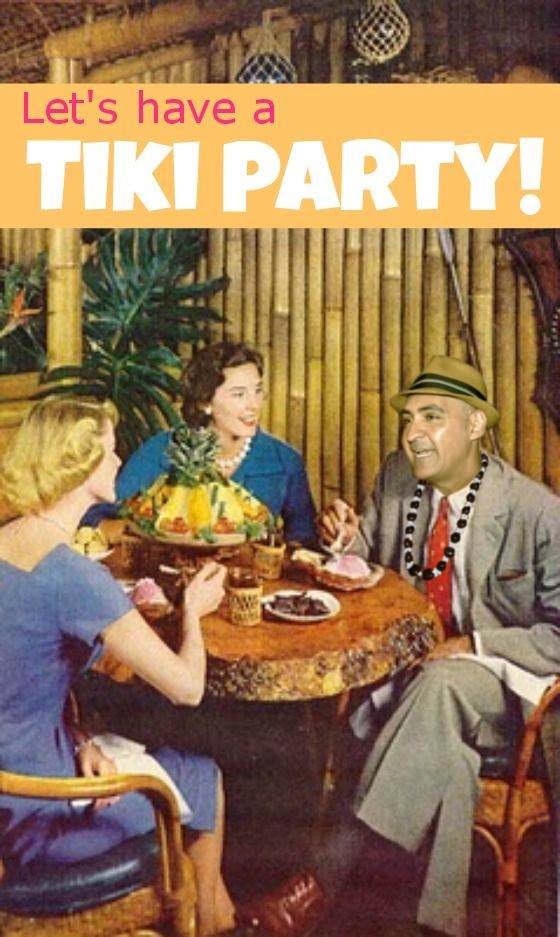
Before Forbidden Island there was The Conga Lounge. Can you give a little history?
Michael- I’ve been involved in a family pizza restaurant, Pizza Rustica, since 1991, located in the Rockridge district of Oakland. It was a two-story restaurant in a stand alone building designed by famous Bay Area Modernist architects, Stein& Swatt. By 2003, business had dropped and we weren’t really using the 2nd floor for much, other than private parties. I discussed with my brothers the idea of applying for a liquor license and transforming it into a Tiki bar. They had no idea what Tiki was, but seeing first hand my passion for it and my hand-drawn plans and concept, they agreed and the Conga Lounge, Oakland’s first Tiki bar since the ’60s opened its doors on May 30th, 2003…
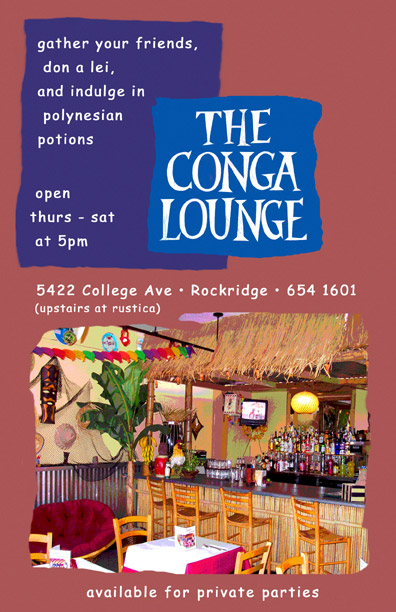
The immediate reception was lukewarm, especially during construction. Keep in mind, these were still dark days of Tiki. Folks would stop by inquisitively and ask “Why a Tiki bar?” or “I guess you’ll be serving Mai Tai’s?” (Chuckle chuckle.) However, once we opened and folks began to experience the escapism that a Tiki bar offers, enjoying the retro vibe that was further accentuated by period music and theme movies playing on the bar TV. Of course, once they tasted a quality, balanced Tiki cocktail, their perception of Tiki bars changed. Despite it’s diminutive size, Conga began to enjoy quite a reputation.
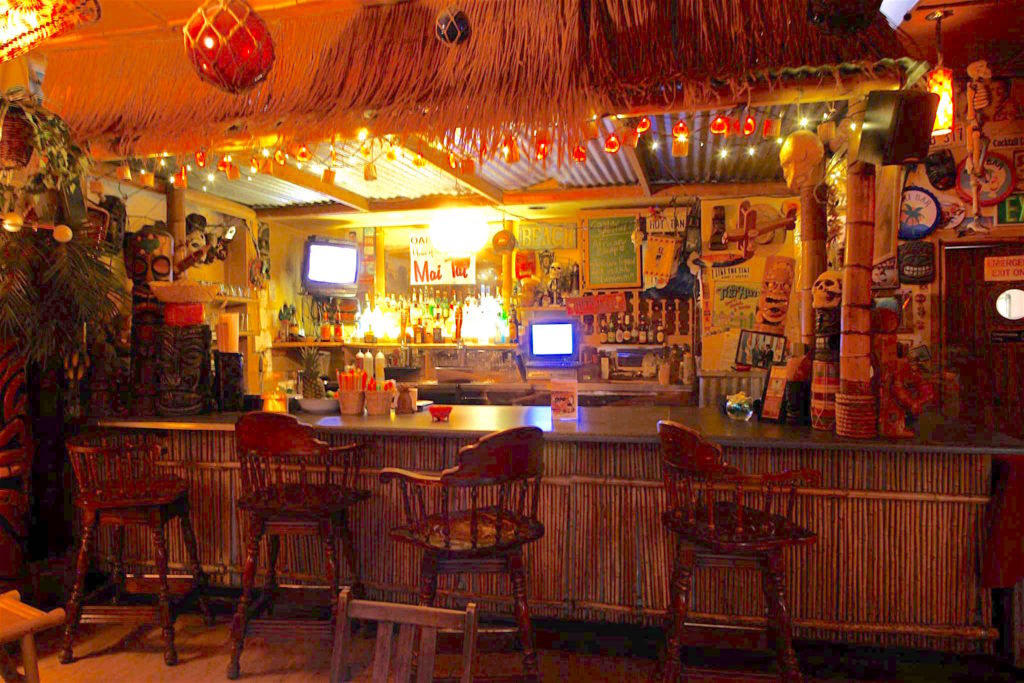
By 2006, Conga had a steady following of regulars and neighbors, as well as accolades in the media. This was thanks in part to folks in the Tiki community, such as Will Viharo and Otto von Stroheim, who promoted our “little slice of Paradise” beyond our immediate customer base. We also began to feature retro themed nights, such as a Spy Night, Spaghetti Western, tributes to Elvis and Forbidden Island, and a once-a-month Exotica DJ Night led by Tiki Oasis founder Otto von Stroheim.
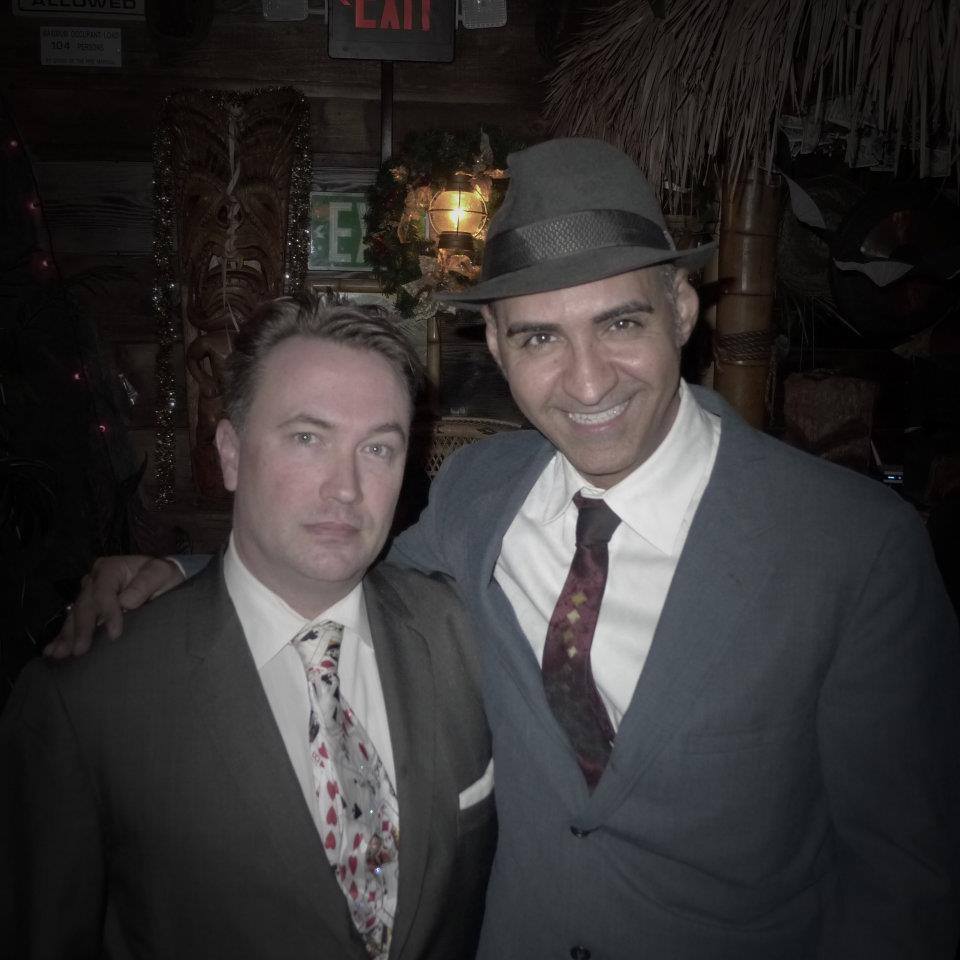
Unbeknownst to us, the groundwork of what was to become Forbidden Island was being laid. Conga’s claim to fame as the only Tiki bar in Oakland was short-lived. Kona Club opened in 2005 with a thoroughly impressive build out by prominent members of the fast fledging Tiki community, Bamboo Ben and Crazy Al. Despite the décor, Kona’s vibe remained contemporary rather than retro, preferring a hip hop/ rock soundtrack, sports on the TV, and drinks that never really compared. The experiment that was Conga was a success and the time had come to fulfill our dream: find the perfect location, preferably a dark dive, and convert it into a classic Mid-Century style Tiki lounge, serving a huge array of classic Tiki cocktails DONE RIGHT with fresh juices, house-made syrups, and using the original Mid-Century recipes.
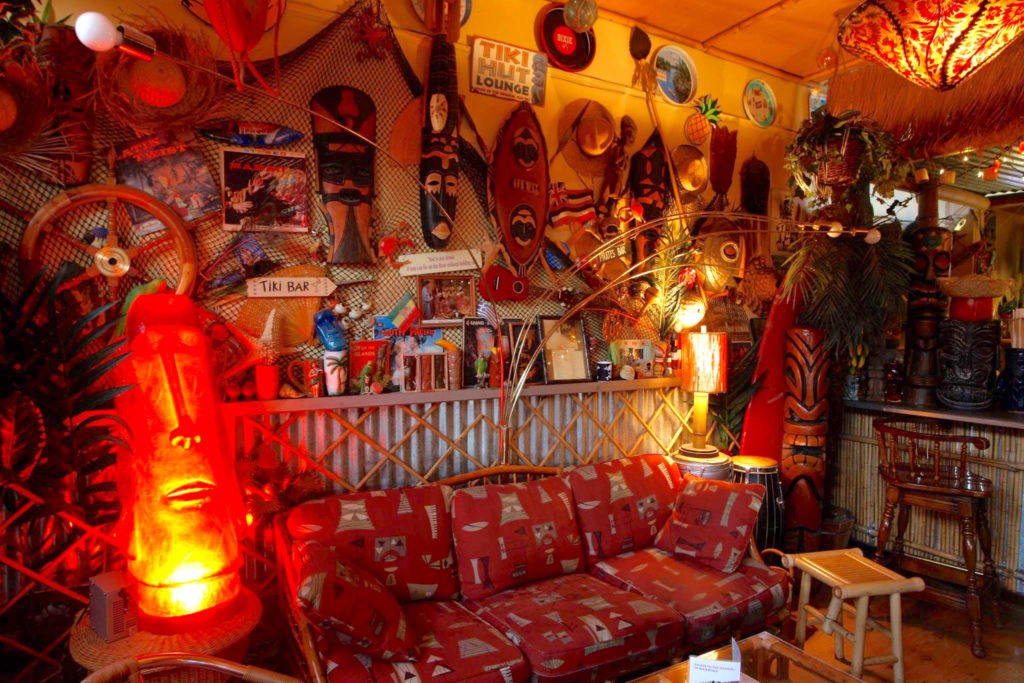
How did Forbidden Island become a reality? How did it all come together?
Michael- We immediately began scouting for a location to make this a reality. We searched in Berkeley, SF, and almost put in an offer on a dive bar in the Lakeshore district of Oakland. All along, we kept an eye open in Alameda. Alameda seemed the perfect place for such a venture. It’s an island and had a vast nautical history as well as a strong retro sensibility. The long shuttered Alameda Theater, from the ’30s, was in the process of being refurbished and about to open. In a chance encounter with the owner of a local dive bar, Lincoln’s Address, my brother Mano was offered the opportunity to purchase the bar. He gave me the address and I stopped by. When I saw the stand alone building with the nondescript exterior that seemed shut out from the outside world, except for four nautical themed diamond shaped stained glass windows, I knew it was perfect!
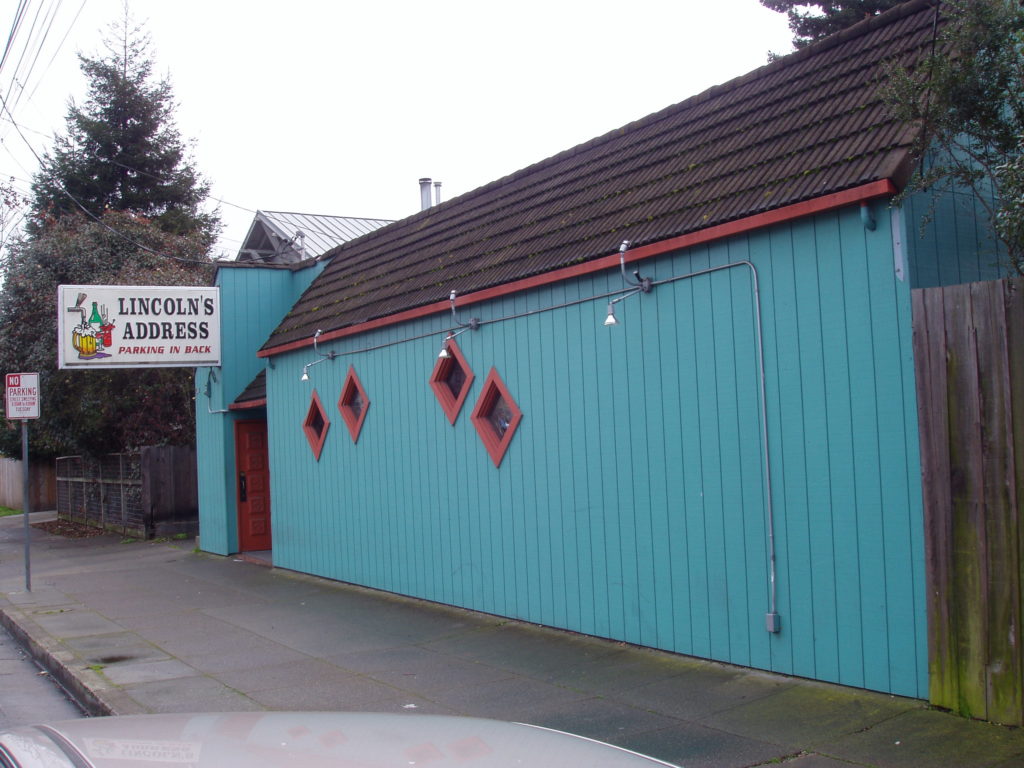
We put in an offer and it was a done deal within days, with the understanding that we wouldn’t take possession of it for several months, giving us a chance to get our ducks in order. Knowing full well our limited time, we were both very much involved in Pizza Rustica and its satellite take-out delivery location, the search was on for a junior partner who would serve as GM. On the recommendation of Otto von Stroheim, I contacted Martin Cate, who we both knew from the Tiki community. Although having had a career in transportation, Martin was a keen Tikiphile, had a Tiki bar in his home, and was known for his mixology at the Tiki Oasis room parties. A meeting was arranged, at Pier 23, on the Oakland Estuary Agreements were easily and instantly reached about the look, feel, and vibe of a potential new classic style Tiki lounge.

Martin was insistent that it should be as much as rum bar as a Tiki bar and showcase rums from all over the world. (Incidentally, Pier 23 transformed another Tiki restaurant, Tiki Toms, a few years later, before being consumed by a fire a year or so after opening.) Since both Martin and I were actively involved on Tiki Central, it was decided that we would reach within the Tiki community for build out and others: Bamboo Ben for the build out, Hanford Lemoore for menu and graphic design, Humuhumu for social media and promotion, Kahaka and Woody for lamps, Jungle Trader for an outdoor space, etc. Forbidden Island was to be probably the first Tikiphile Tiki bar to open, with members of the Tiki community involved in almost every aspect of its build out.
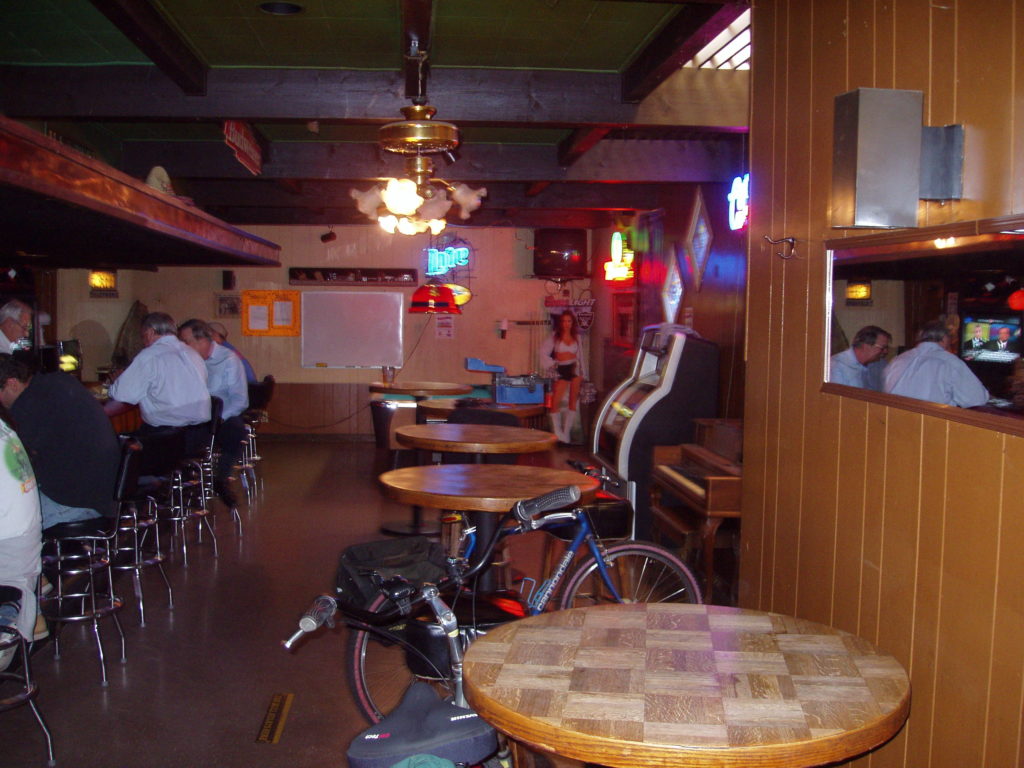
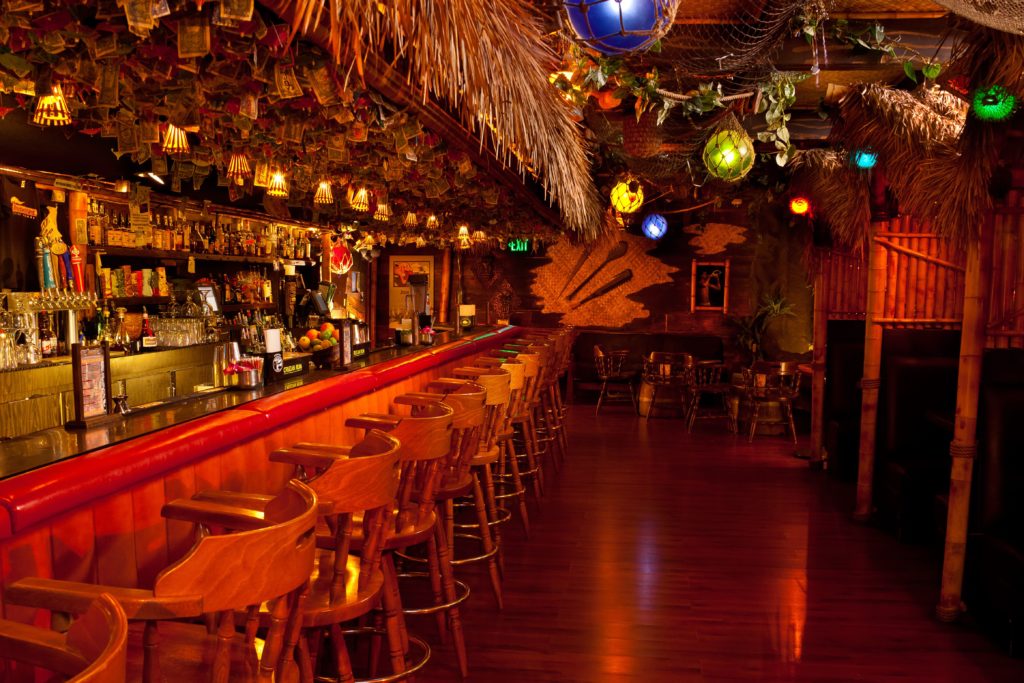
Plans were made for a trip to Oceanic Arts and we gathered our personal Tiki artifact collections in storage until after the build out was complete. Once we took possession, we had all our ducks in order and it took exactly six weeks from possession date to grand opening, April 22nd, 2006!

What is your favorite Tiki drink? What do you think makes the perfect cocktail?
Michael- Outside of Forbidden Island, I’d have to say the Mai Kai’s Mutiny. There’s something about the combination of coffee with rum and juices that seems so weird, yet is just an incredible combination. On Forbidden Island’s menu, I’d have to say the Jet Pilot. Although not a Donn Beach creation, it is based on his Test Pilot and mimics the layers of varied flavors he is so famously known for. Layers of rums of differing expressions, liqueurs, juices, and syrups which tantalize the taste buds with every sip and that to me is the perfect cocktail.
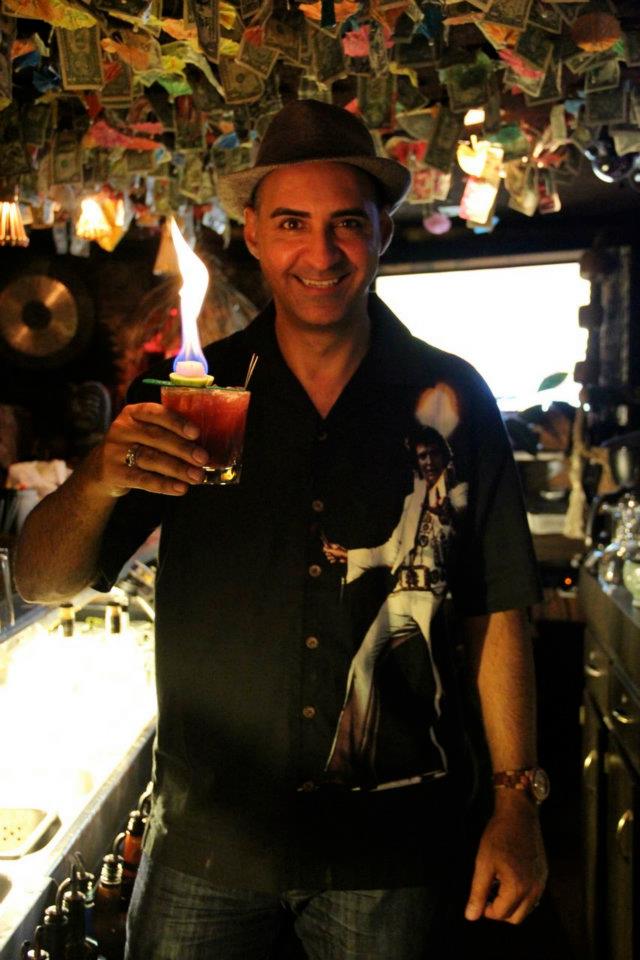
What is your favorite Tiki bar? (Not including Forbidden Island!)
Michael- Ok that’s an easy one: Mai Kai! My first visit there solidified my Tiki obsession and made me want to make a career out of it. Every visit has never disappointed. It was a real treat to bring my little girl there a few years ago. As she walked in, she gasped “Wow!” and that really pleased me. There is rarely a Caribbean trip planned that does not involve a Ft. Lauderdale stop over and a mandatory trip to the Mai Kai!
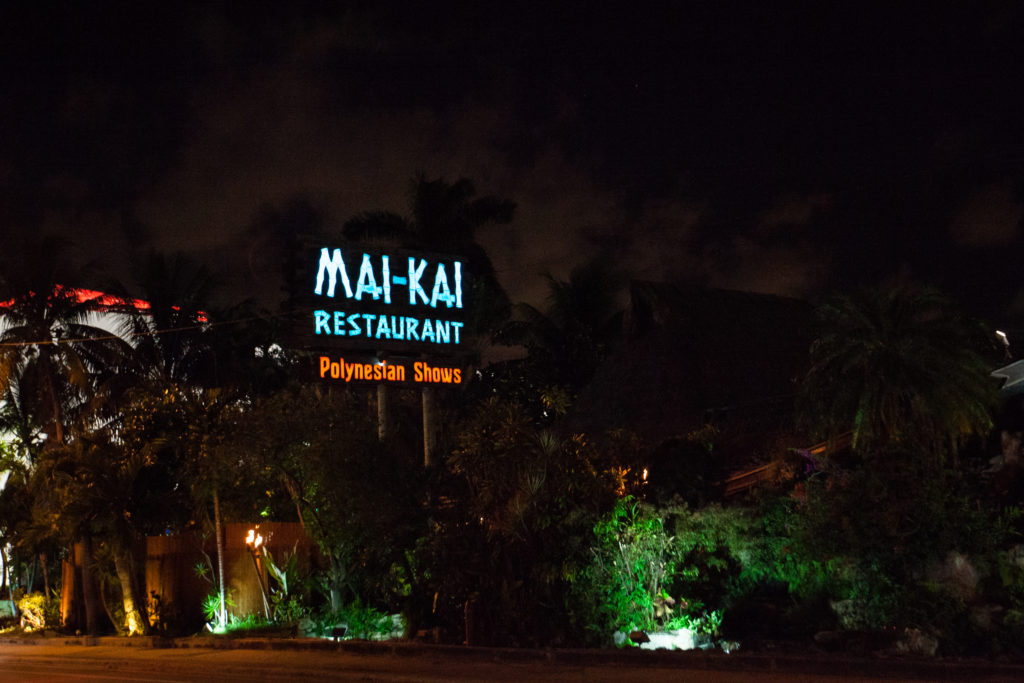
Outside of great drinks, what do you think are essential elements in creating the perfect environment?
Michael- Tiki, more than other theme bars, offers the ultimate escape. It’s important to be absolutely and definitively transported to a mythical tropical Island and to leave your everyday woes behind from the moment you step into the bar. Forbidden Island takes it one step further, by making that escape not only to a place, but also to a different time/age all together. I’ve always believed that from the moment someone walks into the bar, they need to be wowed, from the décor, to the cocktails, to the service, to the audio/ visual. That’s why I believe sight and sound cannot be underestimated. Forbidden Island does that right, by keeping the music on our juke box pre-1967 (i.e. pre-rock/ psychedelia) and using the bar TV as a visual device to mentally transport the customer. We never play sports or any live TV event. Instead, our TV plays Mid-Century Polynesian-themed movies and images.
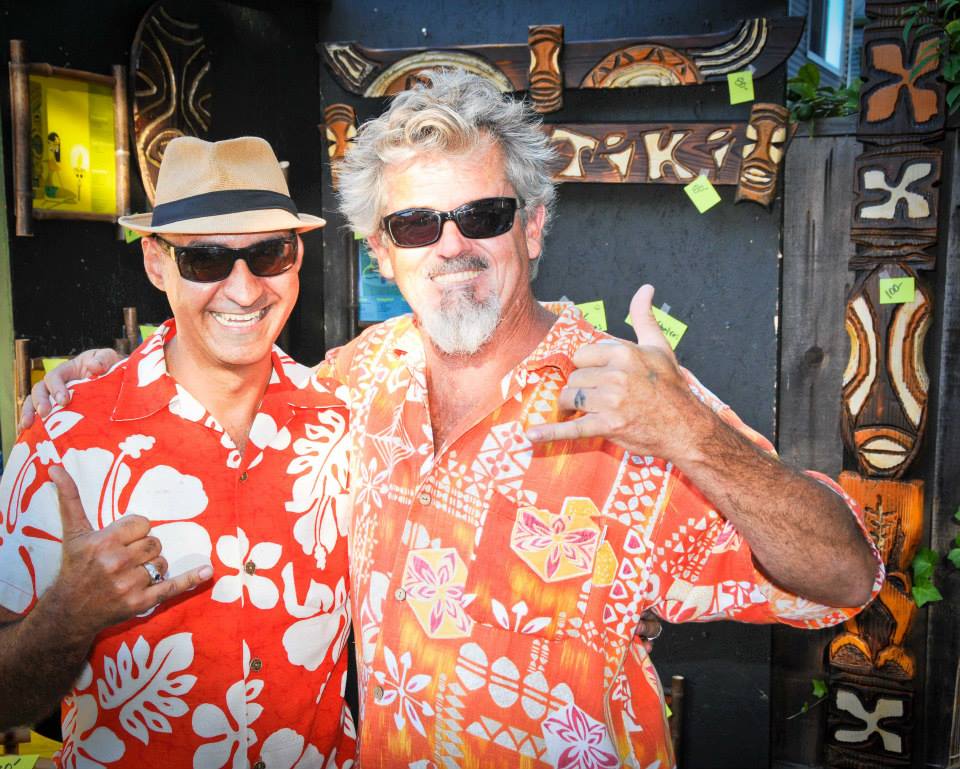
Do you feel that music has an important role in creating a great Tiki experience?
Michael- Absolutely! It immediately sets the mood as you walk into an establishment. As you enter Forbidden Island, you are immediately transported to another time, another place, and the music, as well as the vintage Poly Pop movies on the bar TV, work hand-in- hand with the décor to create this effect. There certainly are many Tiki bars that play contemporary music and I, for one, have always felt very uncomfortable in them.
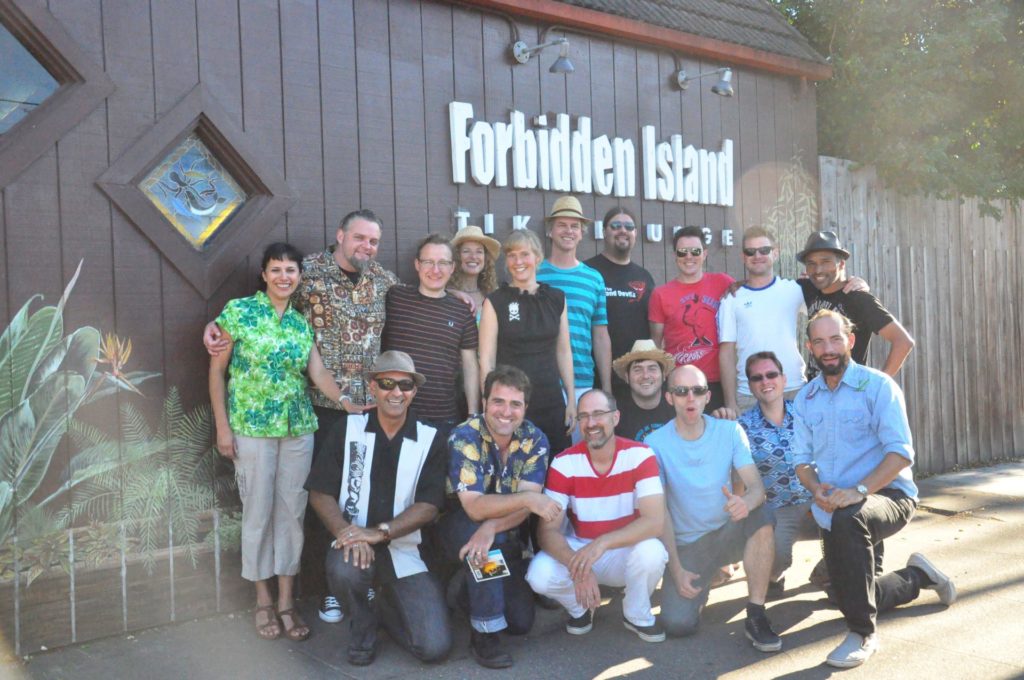
What does the future hold for you and Forbidden Island?
Michael- Hard to say really. I’m approached almost daily to open a Forbidden Island in this city or that. Just not sure I have the energy to go in that direction right now. Personally, I feel I’ve achieve a good balance between my two businesses and my family life, especially rearing my little girl, and would hate to stretch myself too thin with an expansion or opening up other bars. At the moment, I’m content keeping my energy and focus on the present. Ideally, I would love to franchise Forbidden Island, but it would have to be the right person, because I’d hate our name to get tarnished by a sub-standard operator, kind of like what happened to Trader Vic’s when a franchisee opened a dreadful (short-lived) location in La Vegas.
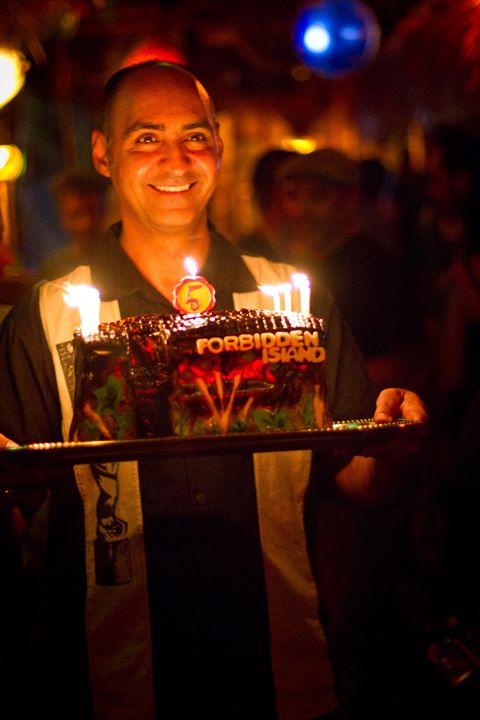
Anything else you would like to add?
Michael- I am not a bartender or a mixologist. Have never claimed to be. I am just a huge fan of Tiki, for almost 20 years now, who felt so very disappointed with the state of this great art form (in the early part of the 21st century) that I felt a personal need to revitalize it! It is certainly interesting to ponder what the future of Tiki would have been if it wasn’t for Forbidden Island and by association, if it wasn’t for my humble efforts. Despite the obvious spin-offs such as Smuggler’s Cove and Longitude by Forbidden Island staff, there are several Tiki bars/ restaurants that have bear a direct lineage to FI! Hale Pele, Three Dots and a Dash, Lost Lake, False Idol and countless others across the nation were directly influenced by FI’s sheer existence. Brice Ginardi, who created the short-lived, but true to the core Tiki bar in the Big Island, Okole Maluna, was a regular at FI who so fell in love with our concept, he wanted to open his own bar. Jason Alexander, after a visit to Okole Maluna, bet his future in Tiki and opened Tacoma Cabana. Even Trader Vic’s shed it’s “old generation” image and created a stripped-down model of their concept, The TV Mai Tai bars, after a top level TV meeting at Forbidden Island in 2006! Over the years, folks have come through our hallowed walls, talking of Tiki bars they are currently opening/ working on and have pilgrimaged to our little slice of paradise to see exactly how it’s done! Not to say that the Tiki revival would not have followed a similar path, due to efforts of Beachbum Berry and others, but it’s undeniable that the pure existence of Forbidden Island is personally responsible for ushering in the current wave of Tiki bars that we now know and enjoy! And if I’d never read that article or visited Trader Vic’s or Mai Kai, who knows what path the Tiki revival would have taken…
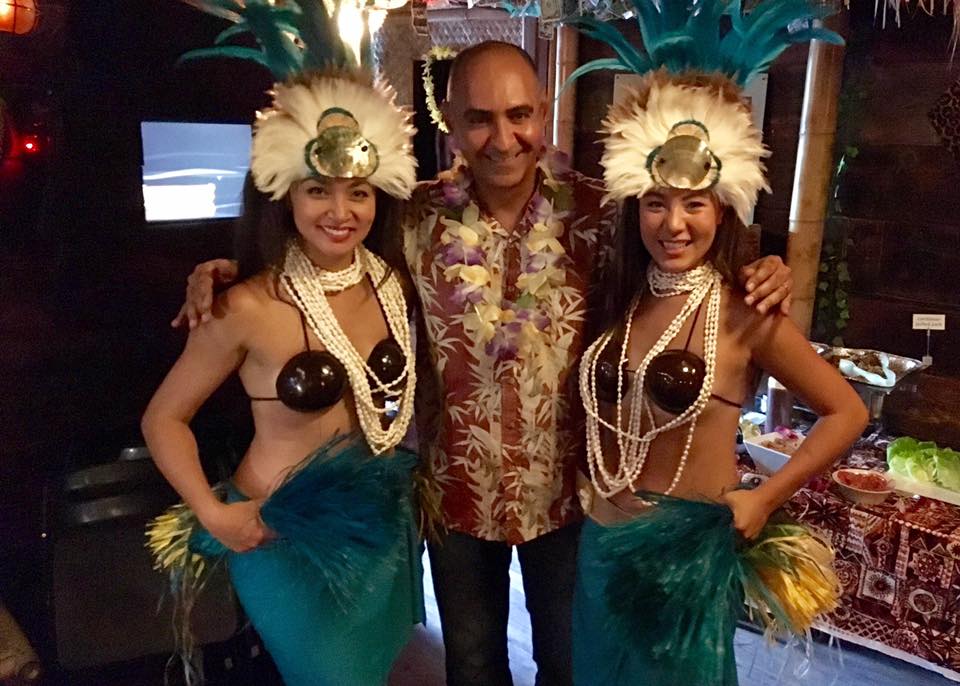
Here is the Forbidden Island website
And Facebook page.
